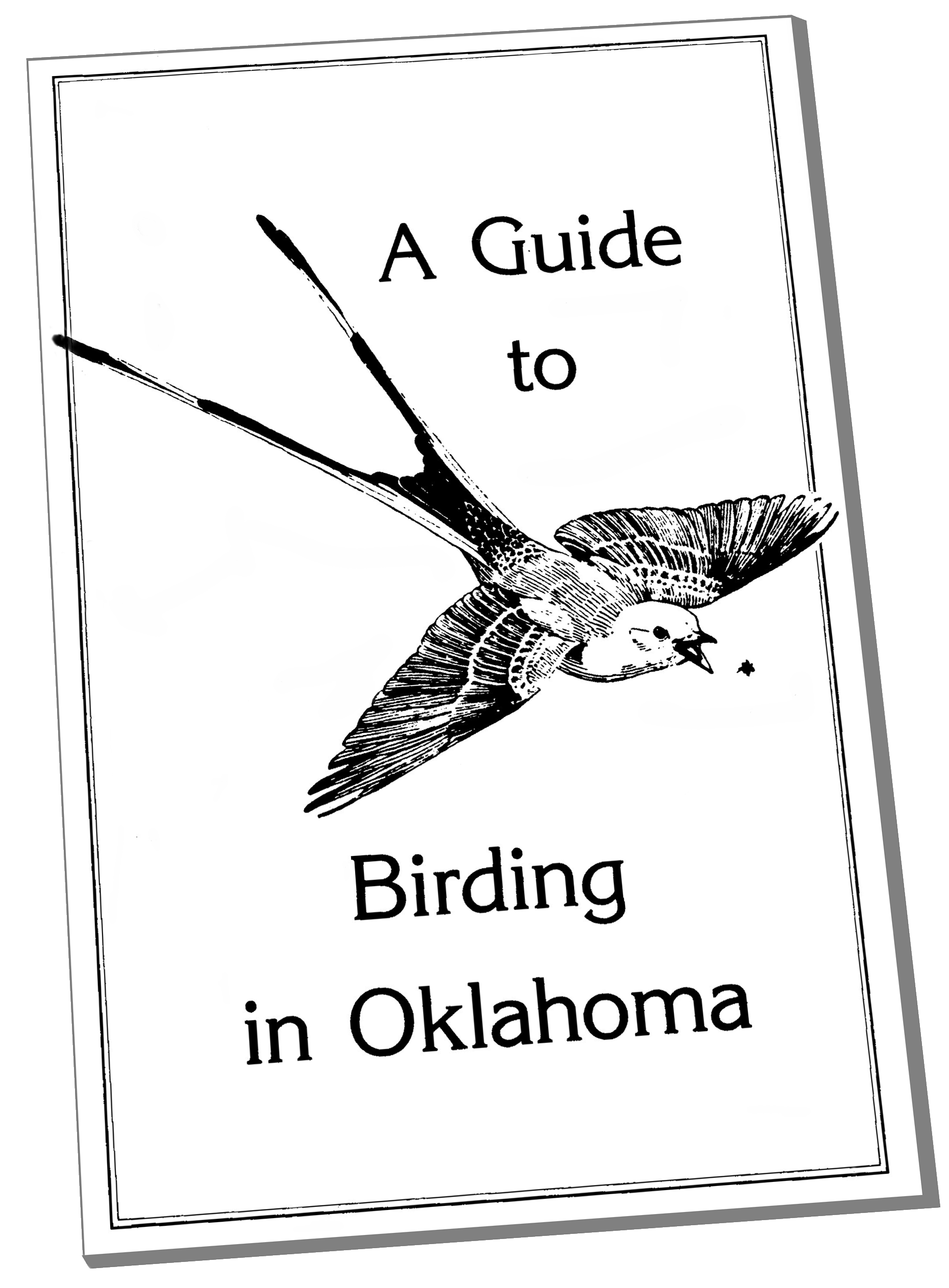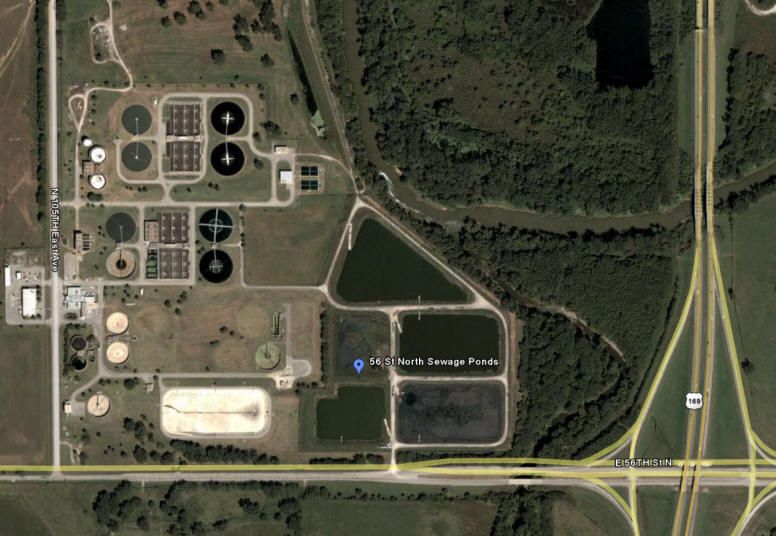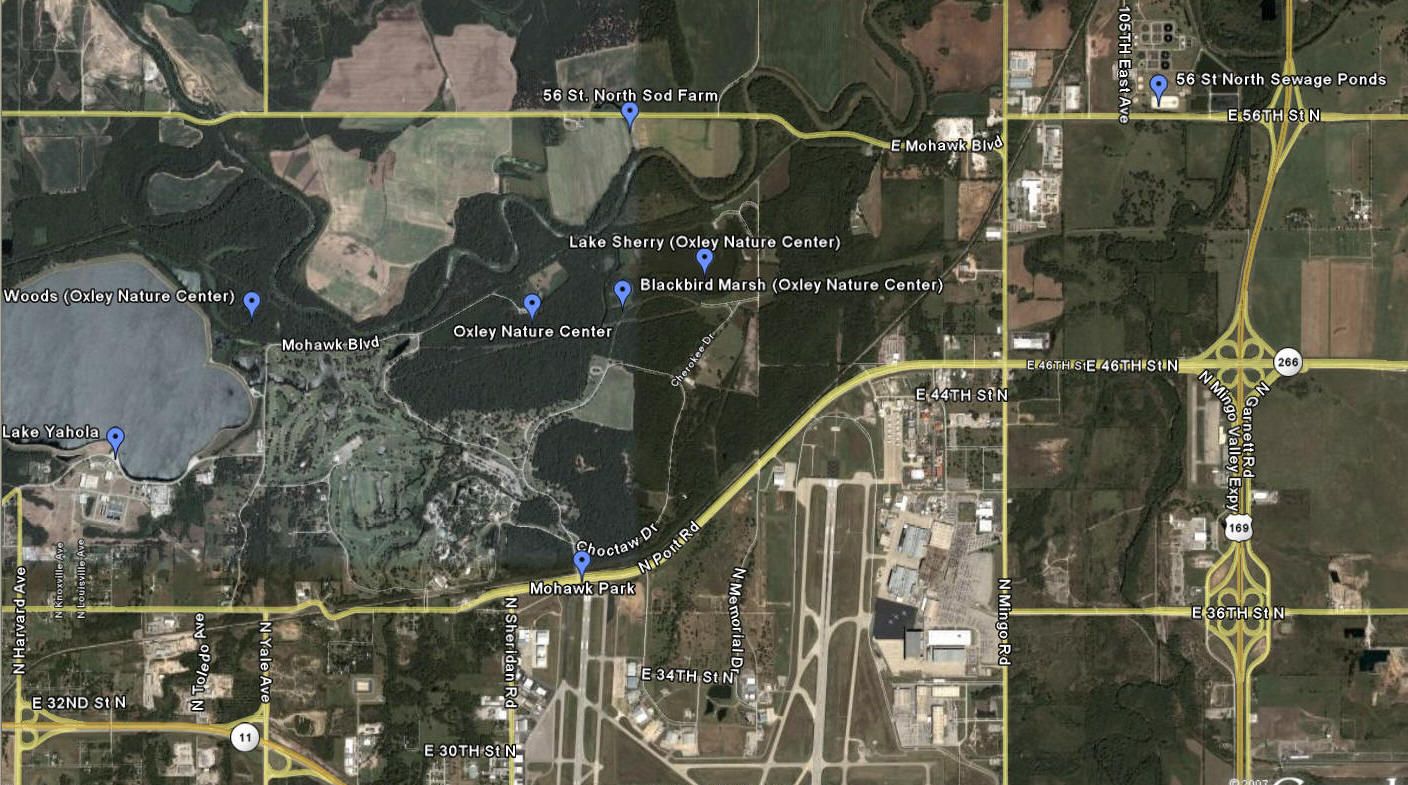Sewage ponds and the areas surrounding them are attractive to a great variety of birds. The plant at 56 St. North offers access to six large ponds separated by graveled dikes. Birds move from one pond to another and are both visible and vocal.
The best route to reach the sewage plant is from US 169 exiting at 56 St. and driving west approximately 0.2 mile. Some of the ponds can be seen from the 56 St. through the chain link fence, but the entrance is on the west side of the facility, off of 105th E. Ave. During working hours the gate is usually open and one can enter the enclosure. Be sure ask one of the employees, in the office or on the grounds, permission to enter the facility.
Shorebirds are the most numerous species using the ponds and are especially so when the ponds are shallow with wide areas forming "sandbars". All of the common shorebirds have been seen here in spring and late summer. The most uncommon species was the Wilson's Plover which spent a month here in 1982. Wilson's and Red-necked Phalaropes have also been recorded. Sanderlings can be studied at very close range as well as Baird's and White-rumped sandpipers feeding and flying close enough for comparison. Often found in the ponds with deeper water are Blue-winged Teal, Mallard, and Wood Duck. The Lark Sparrow is a common summer resident, nesting along the grassy slopes of the dikes.
Small trees and vines grow in the fence line along the road and many small nesting birds are observed there. Northern and Orchard orioles, Indigo Buntings, Yellow-billed Cuckoo, and Blue-gray Gnatcatchers are the most common. At the back of the ponds are tall trees, cottonwoods, hackberry, elm and sycamores, growing along the banks of Bird Creek. These furnish nesting sites for Great Horned Owls, Swainson's and Redtailed hawks, Great Crested Flycatchers, Eastern Wood-Pewees, vireos and warblers. Find the Painted Bunting by its song, a short version of the Warbling Vireo's song. A walk around the ponds and back along the creek will take two hours during spring, late summer and early fall.
GPS Coordinates are 36 degrees 14.109' West, 095 degrees 51.240', 585 feet elevation.
Additional Info
New Paragraph



